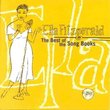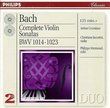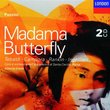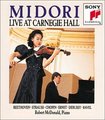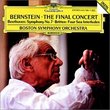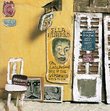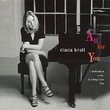| All Artists: Sergey Rachmaninov, Sergei Rachmaninoff, Wayne Stahnke Title: A Window in Time: Rachmaninoff Performs His Solo Piano Works Members Wishing: 0 Total Copies: 0 Label: Telarc Release Date: 8/25/1998 Genres: Pop, Classical Styles: Vocal Pop, Ballets & Dances, Polkas, Historical Periods, Modern, 20th, & 21st Century, Symphonies Number of Discs: 1 SwapaCD Credits: 1 UPC: 089408048920 |
Search - Sergey Rachmaninov, Sergei Rachmaninoff, Wayne Stahnke :: A Window in Time: Rachmaninoff Performs His Solo Piano Works
 | Sergey Rachmaninov, Sergei Rachmaninoff, Wayne Stahnke A Window in Time: Rachmaninoff Performs His Solo Piano Works Genres: Pop, Classical
This collection of Rachmaninoff's solo piano performances relies on a mix of old and new technologies. Between 1919 and 1929, Rachmaninoff cut these 19 performances to piano rolls, which would then be played back through r... more » |
Larger Image |
CD DetailsSynopsis
Amazon.com This collection of Rachmaninoff's solo piano performances relies on a mix of old and new technologies. Between 1919 and 1929, Rachmaninoff cut these 19 performances to piano rolls, which would then be played back through reproducing pianos capable of accurately re-creating the original performances through pneumatic devices that animated the rolls with living nuances and shades--a facet that differentiated the classier reproduction keyboards from the more common "player pianos." This set updates the technology with electronic devices--transparently, though expertly, replacing the pneumatics. Played back on a Bösendorfer Reproducing Piano, this collection sounds astounding, full of Rachmaninoff's lickety-quick motion and his punching intensity when striking the keys. There are 18 Rachmaninoff selections--some of them collaborations--and one gem, "The Star-Spangled Banner," taken to new places in this 1919 reading. --Andrew Bartlett Similarly Requested CDs
|
CD ReviewsIt's even better than you'd think possible pm444 | Okemos, MI USA | 05/31/1999 (5 out of 5 stars) "All of the superlatives in the reviews from other listeners are accurate. This CD will blow you away. First of all, the incredible dynamic range of the recording itself puts it in the top 10 greatest solo piano CDs of all time. Second, the power and the beauty of the performances cast piano rolls in a whole new light. I think that there has been a tendency to view recordings derived from piano rolls as less legitimate than those taken from old records. I admit that I was somewhat skeptical about it myself, expecting to hear a mechanical type of sound with limited expressive quality. Wayne Stahnke's brilliant recording techniques proved me wrong. As it turns out, when properly restored, the piano roll provides the listener with a much more life-like reproduction than any 78 could possibly do. This CD makes it very clear why Rachmaninoff was considered the greatest pianist of his time. A breath-taking experience not to be missed!" Missing much of the nuance compared to playback on an Ampico Michael P. Cohan | St. Louis, MO United States | 12/13/2003 (3 out of 5 stars) "I thought this recording sounded pretty good, until I heard the earlier release "Rachmaninoff plays Rachmaninoff: Ampico Recordings" (Polygram Records, B0000041WS). The latter is a recording of the Ampico rolls as played on an actual Ampico-equipped piano (an Estonia 9' concert grand). The former (this item) was done by scanning these same rolls into a computer, then transforming the data into a form readable by a Boesendorfer equipped with an electronic reproducing piano system. One would think the two versions would sound identical after allowing for the difference between the sound of the two pianos (an Estonia would have more sustain and more pronounced overtones than a Boesendorfer), except that perhaps the Boesendorfer electronic player version might be a bit more precise. The fact is, however, that the two versions don't sound anything alike. For a good comparison of the two, I suggest "Flight of the Bumblebee." The recording on "Window in Time" sounds positively mechanical compared with the performance on the actual Ampico. Pedal effects, accents, and dynamic contrasts that are barely audible on the robotic "Window in Time" recording come into sharp relief on the Polygram recording, which sounds like an actual pianist playing. The same is true of the other pieces. They don't sound bad on "Window in Time" but listen to the other recording and you will see that much is missing here. I'm not sure if it's the piano or the recording, but if you want to hear what Rachmaninoff probably sounded like, I recommend the other recording over "Window in Time". I just can't believe that Rachmaninoff was this mechanical-sounding, and on the Polygram recording, he wasn't. The Polygram recording sounds like a recording of a great pianist. "Window in Time" sounds like a player piano in comparison." Truly Magnificent! W L Milo | Austin, TX. | 07/18/2004 (5 out of 5 stars) "I just got this CD and with some trepidations sat back and listened intently from start to finish. WOW!! I was hoping that the negative reviews about mechanical and robotic playing would not be too accurate. Well those reviews were utterly absurd, these are MAGNIFICENT recordings! To paraphrase the liner notes, we can thank our lucky stars that we live in a time that technology can bring us this close to the great Rachmaninoff! From some of the reviews one could think this is some sort of computer generated music, robotic and lifeless. Nothing could be further from the truth. The humanity, soul and beauty of the playing leaps out at you. We owe Mr. Stahnke a debt of gratitude for this labor of love. This is art restoration of a high order, not technological interference. To fault this incredible "remastering" of the orginal rolls is like faulting the new digital transfers of old analog tape. It is not "interfering" with original recordings, it is restoration. Purist debates and Bose versus Stein arguments are meaningless when hearing Rachmaninoff play with this level of clarity and beauty of sound. Just like digital transfer of classic films or "cleaning" of masterpiece paintings, this is technology being used to increase our experience of the original intent, not to alter it. I have ordered the second one as well and will purchase every single issue of old piano roll masters that is restored like this. Don't hesitate, these are truly magnificent recordings that will not disappoint. Five stars without reservation!"
|

 Track Listings (19) - Disc #1
Track Listings (19) - Disc #1